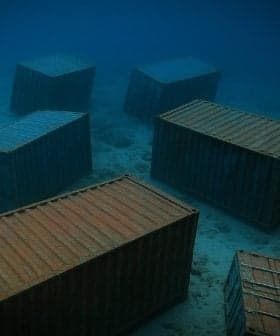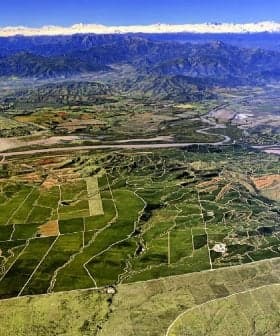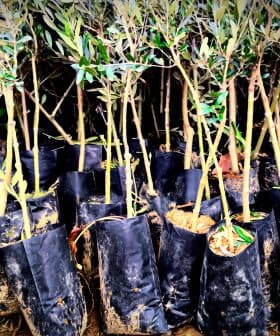Producer Prices Lowest Since 2009
The European Commission-subsidized market withdrawal of olive oil has not increased prices, which remain at their lowest levels since 2009, with extra virgin olive oil prices dropping in Spain, Greece, and Italy. The International Olive Council reported a decline in olive and pomace oil imports into Canada and Australia, with the US showing only a 1% increase in imports, while China, Russia, and Brazil have experienced growth in imports.
 The latest round of European Commission-subsidised market withdrawal of olive oil has failed to rally prices, which the International Olive Council says remain at their lowest levels since 2009.
The latest round of European Commission-subsidised market withdrawal of olive oil has failed to rally prices, which the International Olive Council says remain at their lowest levels since 2009.
According to its May market newsletter, extra virgin olive oil prices are 11 percent lower in Spain (€1.77/kg), 10 percent in Greece (€1.84/kg) and 39 percent in Italy (€2.38/kg), compared with the same six months last season,
“In recent months, prices have flatlined in Greece and remained virtually steady in Spain while perking slightly in Italy. Even so, they are at their lowest levels since October 2009 in all three countries,” the IOC says.
Prices for refined olive oil are at their worst for the last three crop years and the gap between the price of refined olive oil andextra virgin olive oil is now about €0.07/kg in Spain and €0.59/kg in Italy.
World olive oil and pomace oil market
In its April newsletter, the IOC described as “worrying” a decline in olive and pomace oil imports into Canada and Australia. Now it reports that Canadian imports have recovered slightly, though they are still down 14 percent this October – March compared to a year ago, while imports into Australia are up 2 percent.
The world’s leading importer, the United States, shows an increase of just 1 percent for the first six months of the 2011/12 season, but the figures are more promising for China, Russia and Brazil with respective growth of 22, 16, and 6 percent. Earlier this week, the IOC called for tenders for a €600,000 ($754,000) promotion campaign in Japan, where growth is up 7 percent.
Imports into and within the EU are also down. The former by 15 percent, “which comes as no surprise given the volume of EU production this season” the IOC said.
World table olive market: imports rise in Brazil alone
Table olive imports for October – March are lower for most countries — except into Brazil, where they’ve climbed 23 percent. They held steady in Canada but fell 9 percent in the US, 4 percent in Russia and the EU, and 2 percent in Australia.
Argentina: olive oil exports up but consumption down
This month’s newsletter profiles Argentina, the location for three IOC meetings next month. The 18th extraordinary session of the IOC Council of Members will be held in Buenos Aires July 2 – 6, and both the 39th meeting of the IOC Advisory Committee and a meeting of quality control agreement signatories on July 2.
The IOC’s only South American member, Argentina, joined in 2009. According to Codex Alimentarius documents, one of its reasons was to “show that Argentine olive oils are authentic”, even when their fatty acid profiles differ from the typical Mediterranean ones and fall short of IOC paramaters designed to detect adulteration. Because some oils from Argentina’s new production areas have low oleic acid values and high linoleic acid ones, it has been pushing for changes to relevant parameters.
The IOC newsletter, meanwhile, says olive oil production has risen sharply in the last ten years in Argentina “albeit more in relative terms than absolute terms”, given the 275 percent growth amounts to just 11,000 tons.
Exports, largely in bulk and of extra virgin grade, have shot up 175 percent in a decade. Half go to the US and 40 percent to Brazil.
But there’s been a downturn in Argentine olive oil production since it reached a high of 27,000 tons in 2007/08, which “can very probably be explained in part by orchard conversion to production for table olives” the IOC said.
While domestic olive oil consumption slipped 17% in the last ten years, table olive consumption soared 180 percent to reach 35,000 tons last season and table olive production has hit 250,000 tons. Exports are principally to Brazil.
“Argentina offers excellent natural conditions for the development of olive cultivation. Two yardsticks can be used to measure its potential: the exponential growth in the number of advanced genetics trees and the growth in Argentine exports, particularly to the two key markets of the United States and Brazil,” the newsletter says.
Market withdrawal of olive oil
The EC opened the first tender for the latest round of private storage aid on May 31 and has already received bids to take a total of more than 86,000 tons of virgin olive oil (of which 413 tons is extra virgin) off the market for six months.
In an EC committee meeting today (June 7) the maximum aid to be paid was fixed at 0.65 €/ton/day, having taken into account “the market situation and the structure of the tenders received,” EC sources said.
New tenders will be accepted until June 19 to bring the total up to the maximum 100,000 tons.









